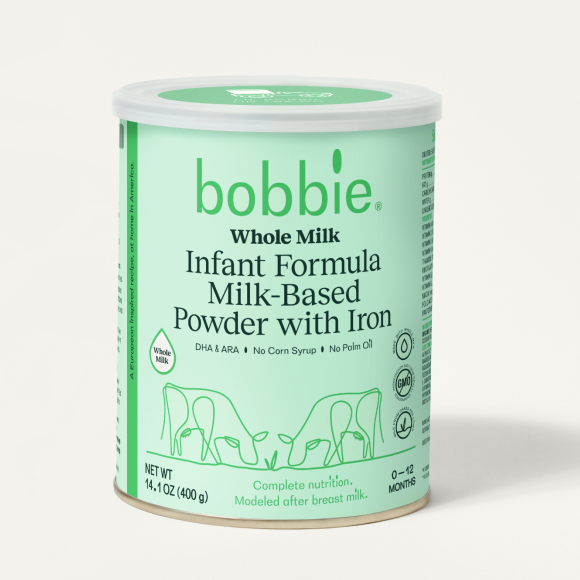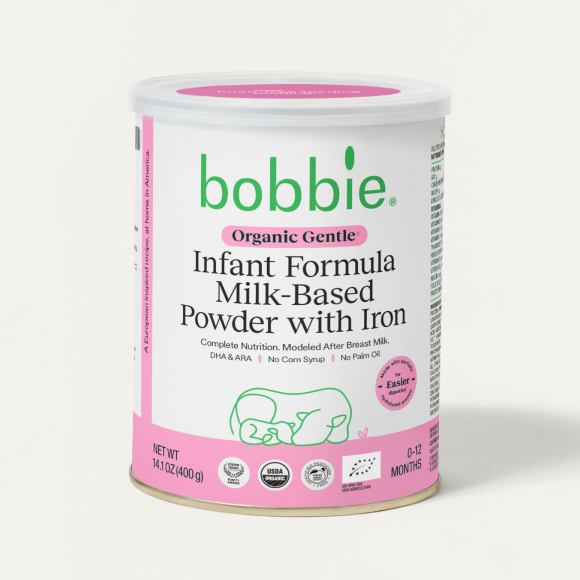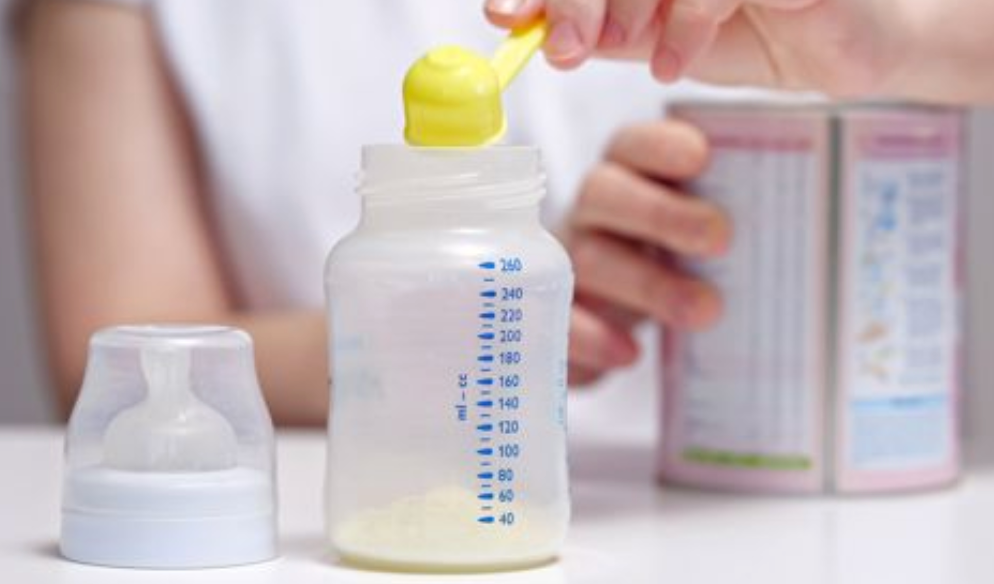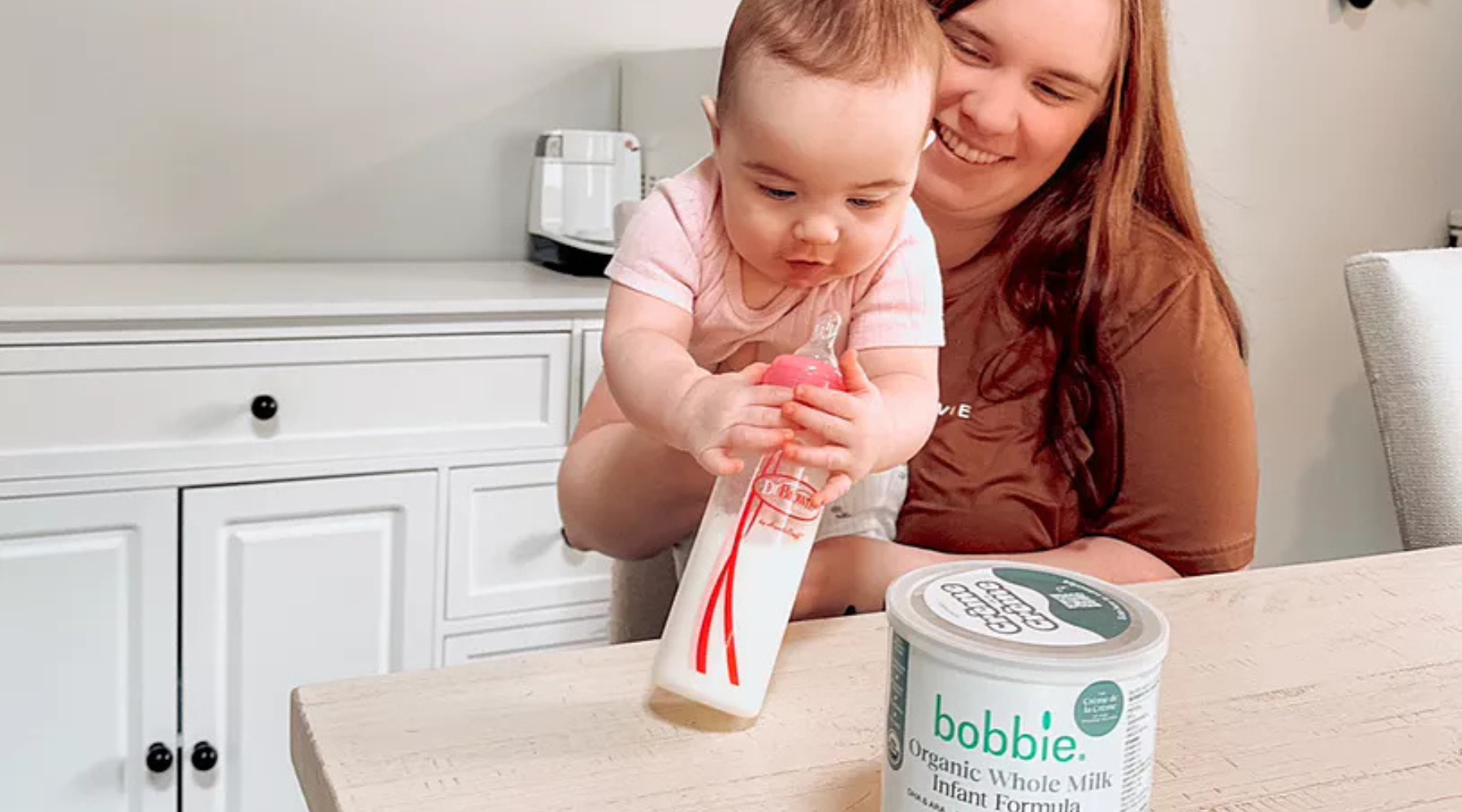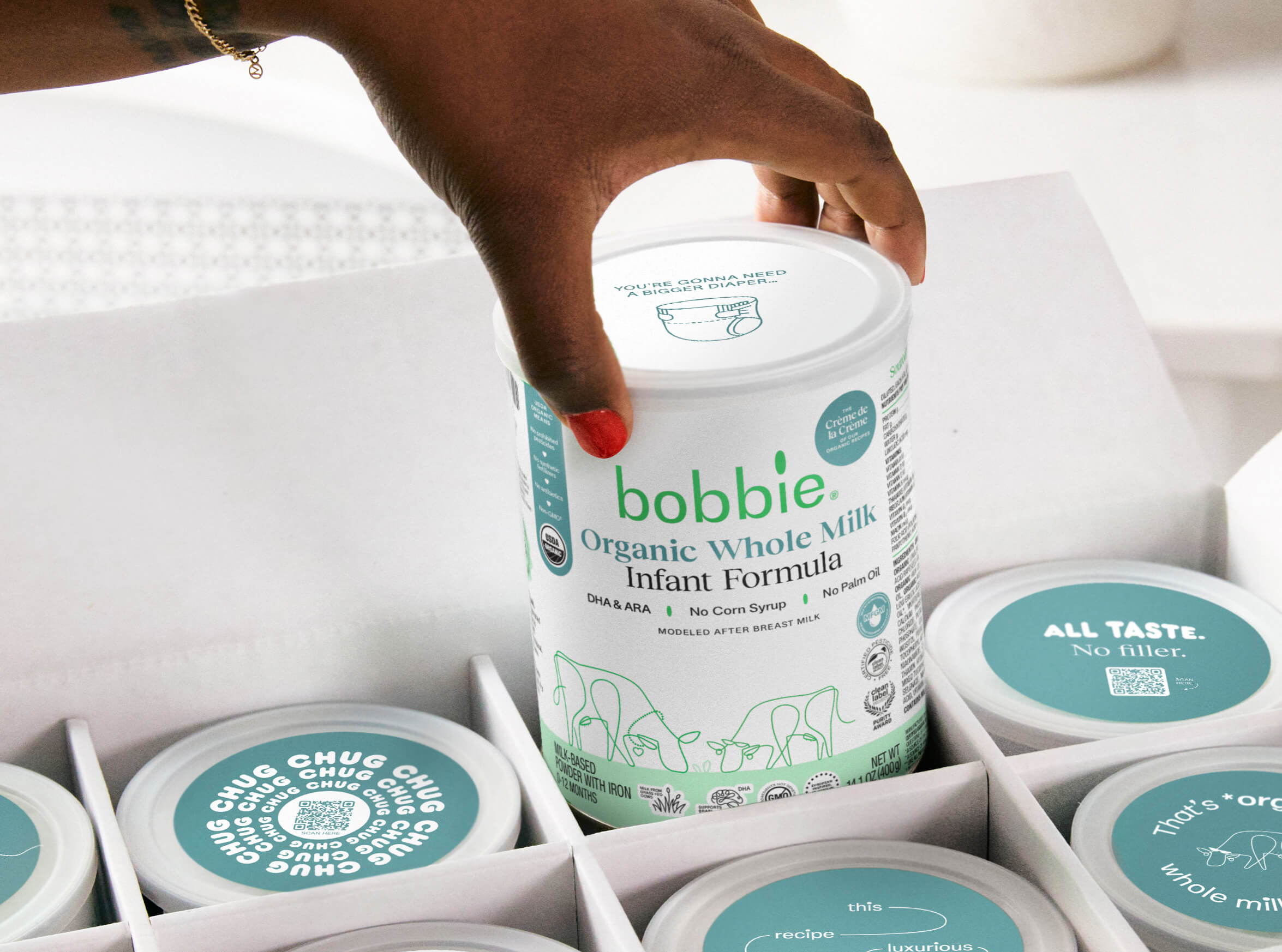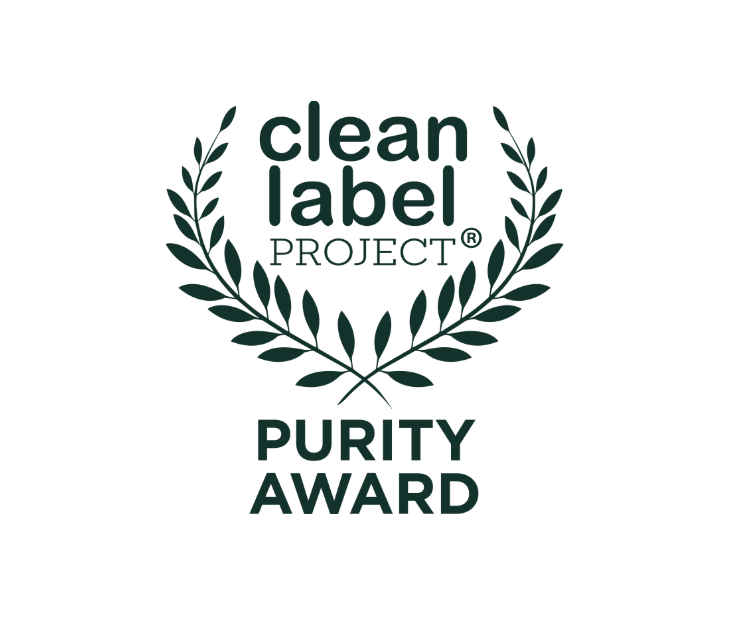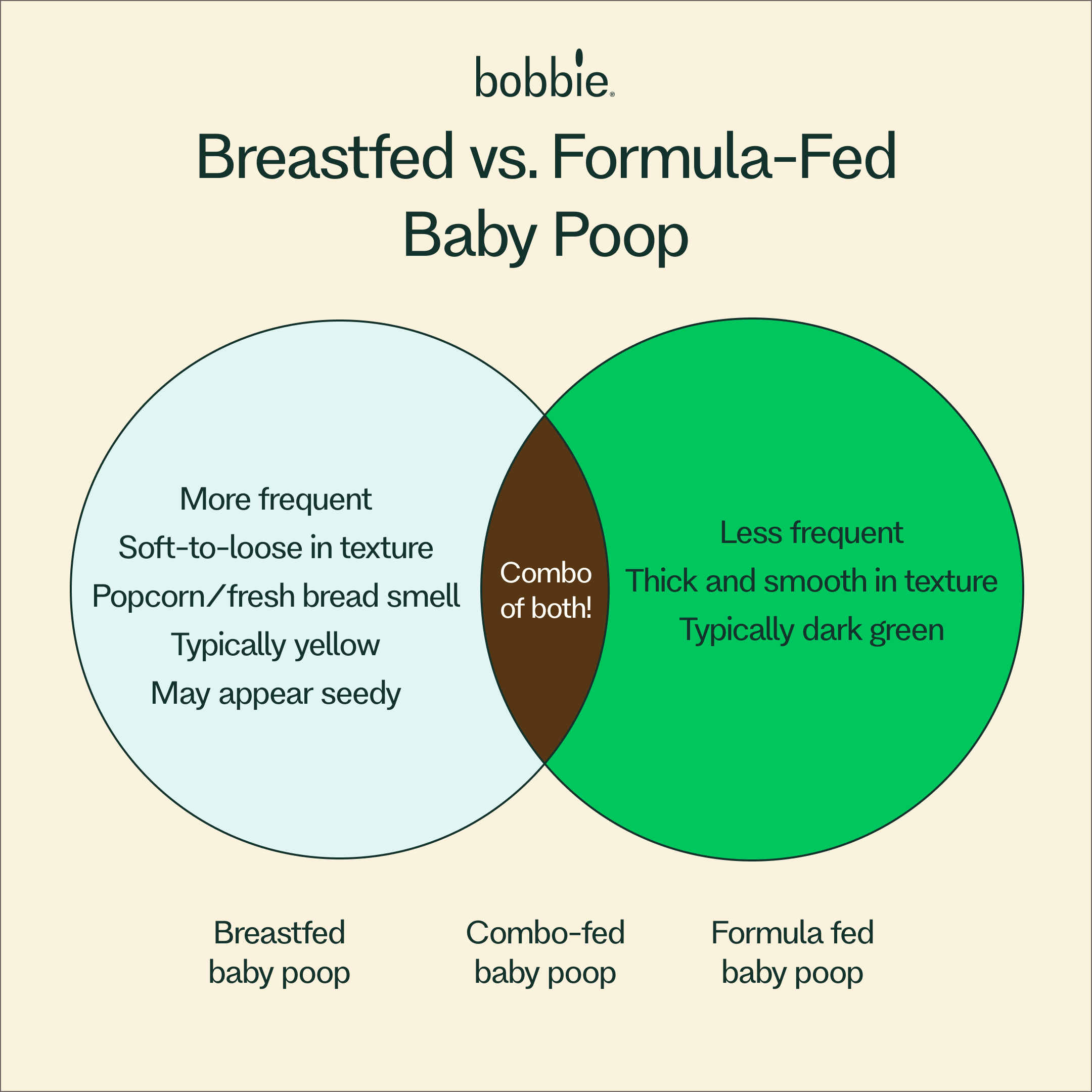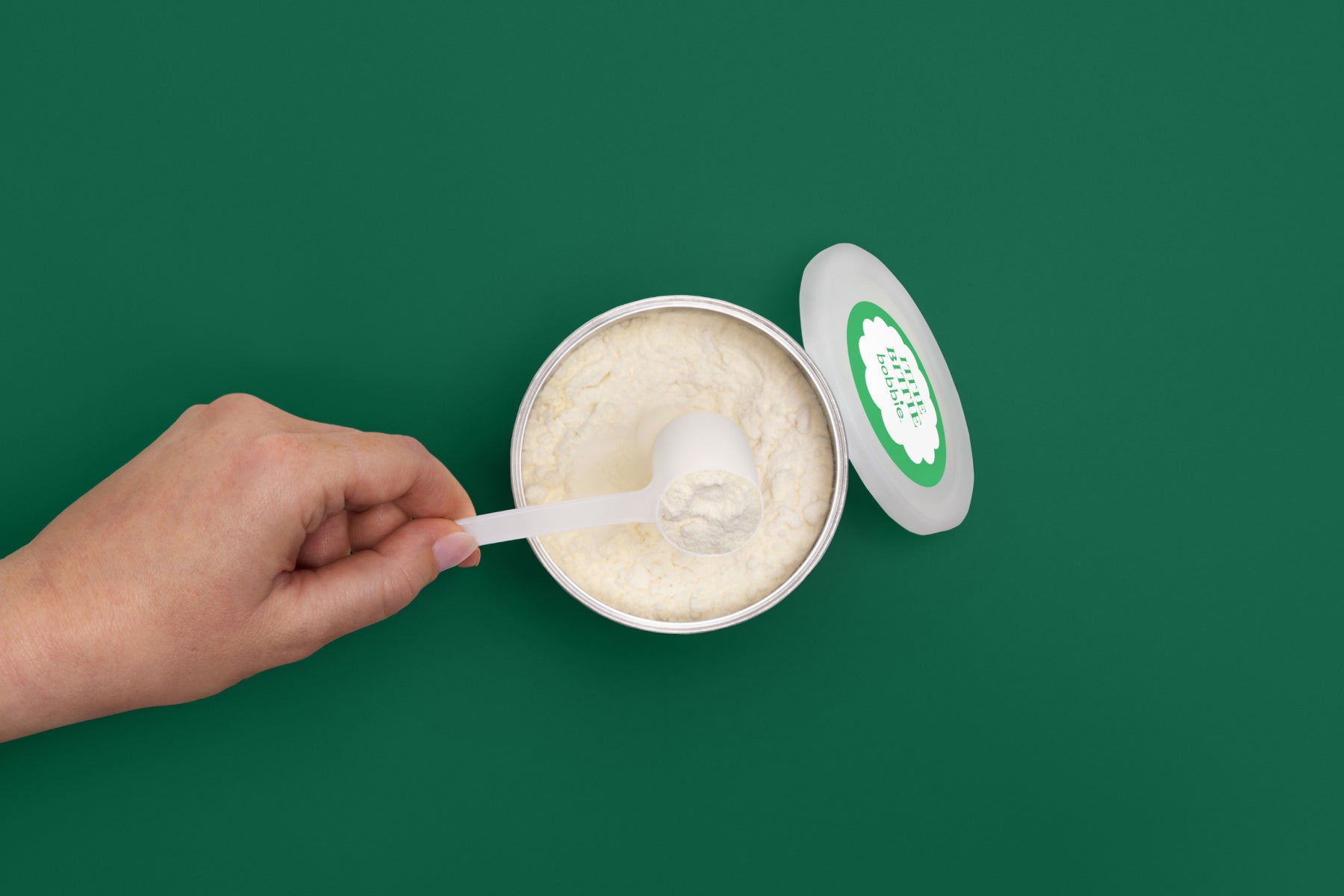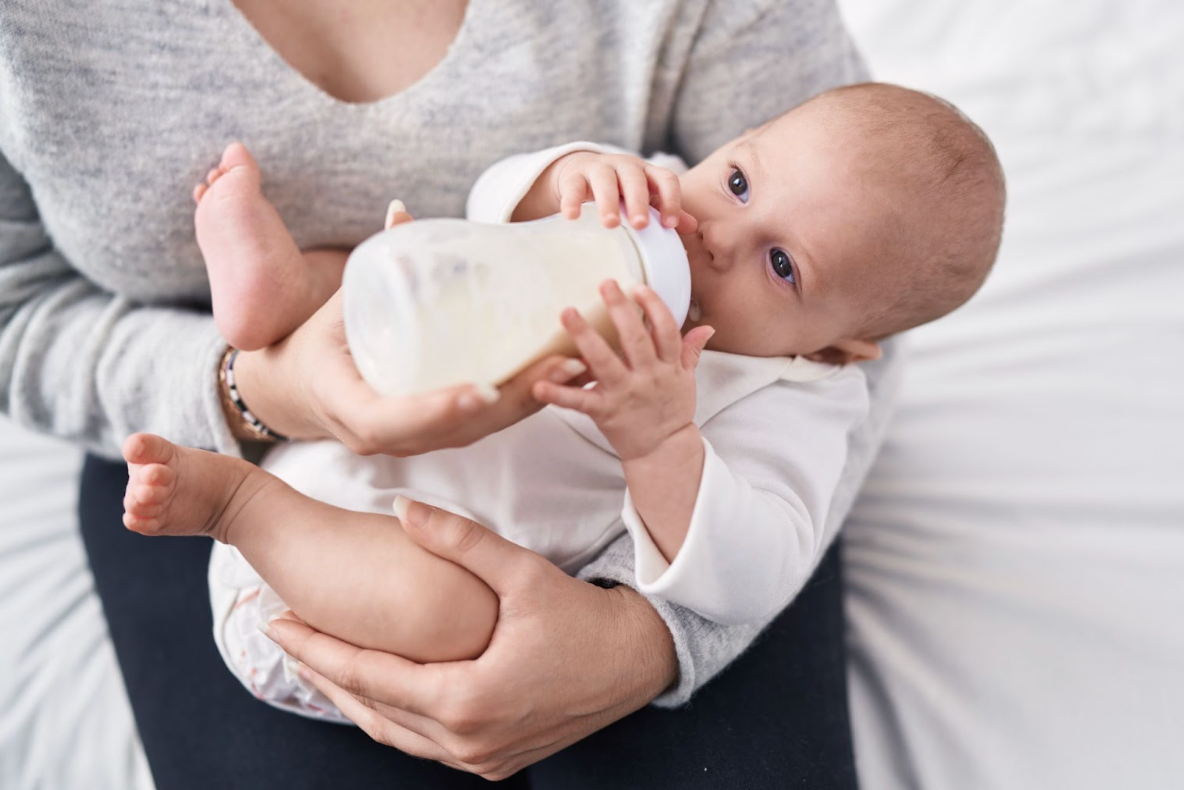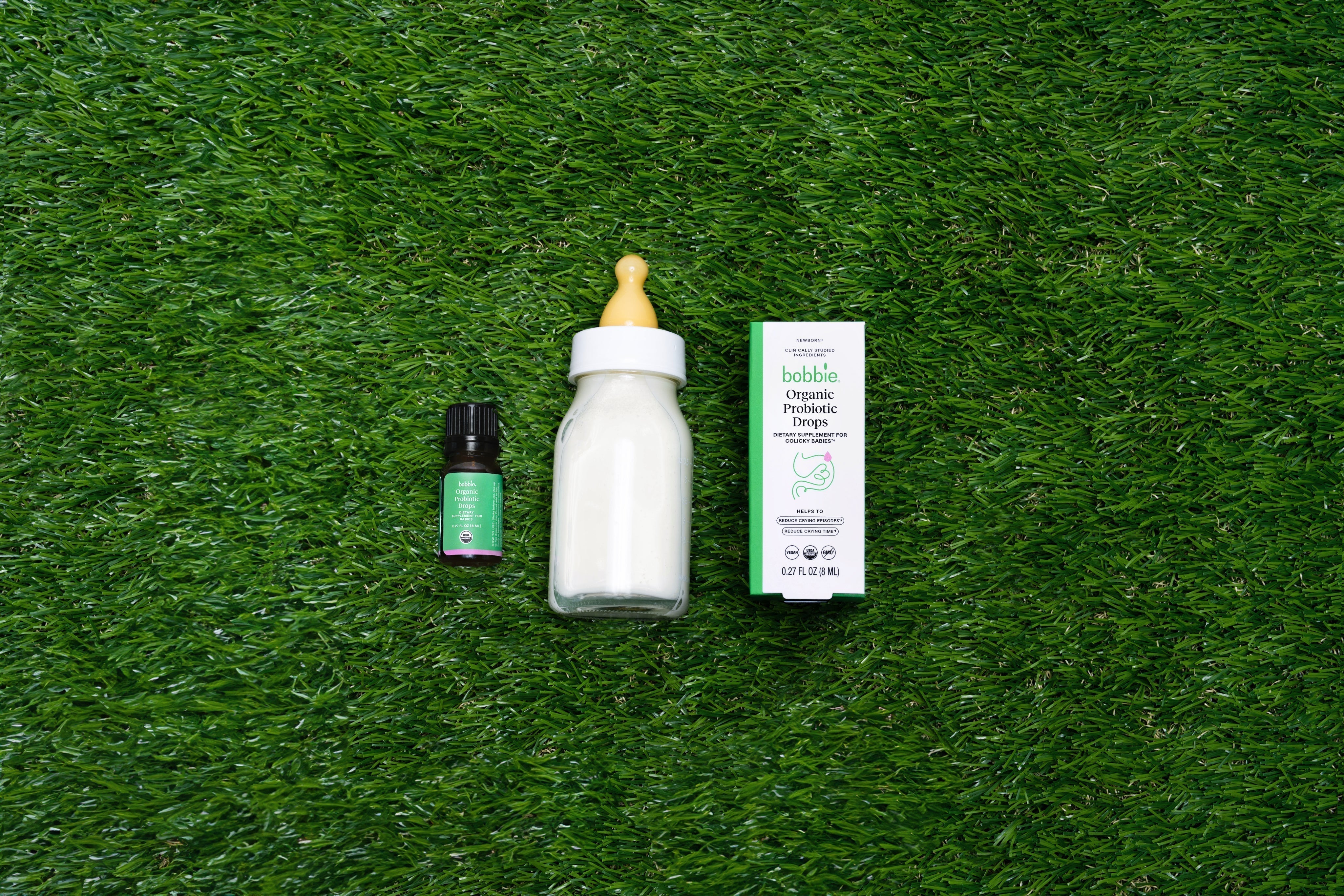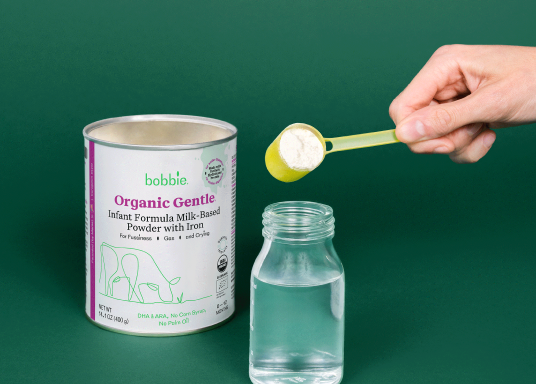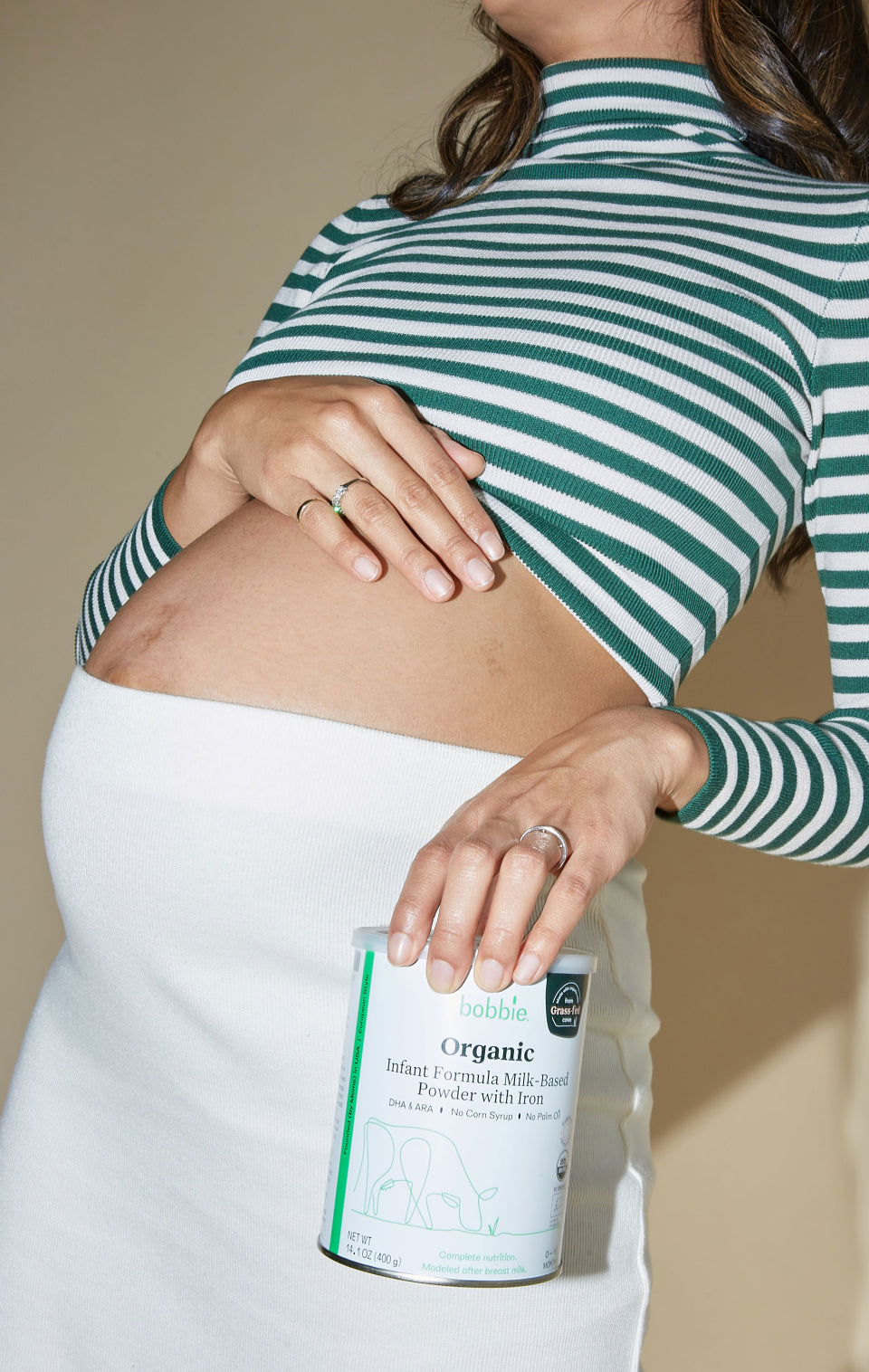Published July 28, 2025

Formula Options That are Modeled after Breast Milk
Breast milk is often described as sweet, smooth, comforting and a flavor that’s hard to beat. While some babies switch to infant formula without batting an eye, others put up a serious protest. If your breastfed baby is suddenly grimacing, pushing away the bottle or refusing to feed altogether, you’re not alone.
The truth? Baby formula doesn’t always taste like breast milk — and that can create a tough transition for both you and your little one.
This guide will help you understand why formula tastes different, how to make it more palatable and which formulas come closest to breast milk in flavor and nutrition. Because feeding your baby should feel reassuring — not like a guessing game.
Why Does Formula Taste Different From Breast Milk?
Human breast milk has a naturally sweet and pleasant taste, thanks to components like lactose (milk sugar), healthy fats and active enzymes that support your baby’s development and evolve over time to meet your little one’s needs. But formula milk has a different job to do — it needs to be shelf-stable, nutritionally complete and consistent in quality.
That means adding key nutrients like iron, DHA and specific proteins. While essential for growth and brain development, these additions can change the flavor and smell of the formula.
Some common culprits that affect taste include:
-
Corn Syrup: Often used as a carbohydrate source, but has a much higher sweetness level than lactose
-
Iron: Crucial for oxygen transport in the blood, but can contribute a metallicky taste and smell
-
DHA: Sourced from fish oil or marine microalgae to provide important omega-3 fatty acids, but can lend a fishy taste and smell
-
Partially-hydrolyzed protein: A great option for babies who have sensitive tummies, but tends to have a more bitter taste and smell than intact milk proteins
The good news? Not all formulas are created equal. Some brands focus on natural ingredients that make the flavor smoother and more appealing to babies.
Signs Your Baby’s Formula Isn’t the Right Fit
Your baby may be rejecting the bottle because of flavor — or because the infant formula just doesn’t agree with their system.
Here are signs to look for:
-
Gagging, pushing the bottle away or turning their head during feeding
-
Crying or fussiness during or after meals
-
Bloating, gas or hard stools
-
Mucus in the stool or unexpected skin rashes
While some signs point to taste, others may indicate a formula intolerance or sensitivity to ingredients like cow milk protein, soy or lactose. Babies with sensitivities may benefit from switching to a formula that’s easier to digest, such as a partially-hydrolyzed protein formula or one made without corn syrup solids or palm oil. If you're unsure what’s causing the issue, talk to your pediatrician before switching and consider tracking your baby’s symptoms for clearer patterns.
Meet the first and only USDA organic infant formula manufactured in the U.S.! Bobbie Organic Whole Milk Formula offers complete nutrition for baby's first year with our closest to breastmilk recipe.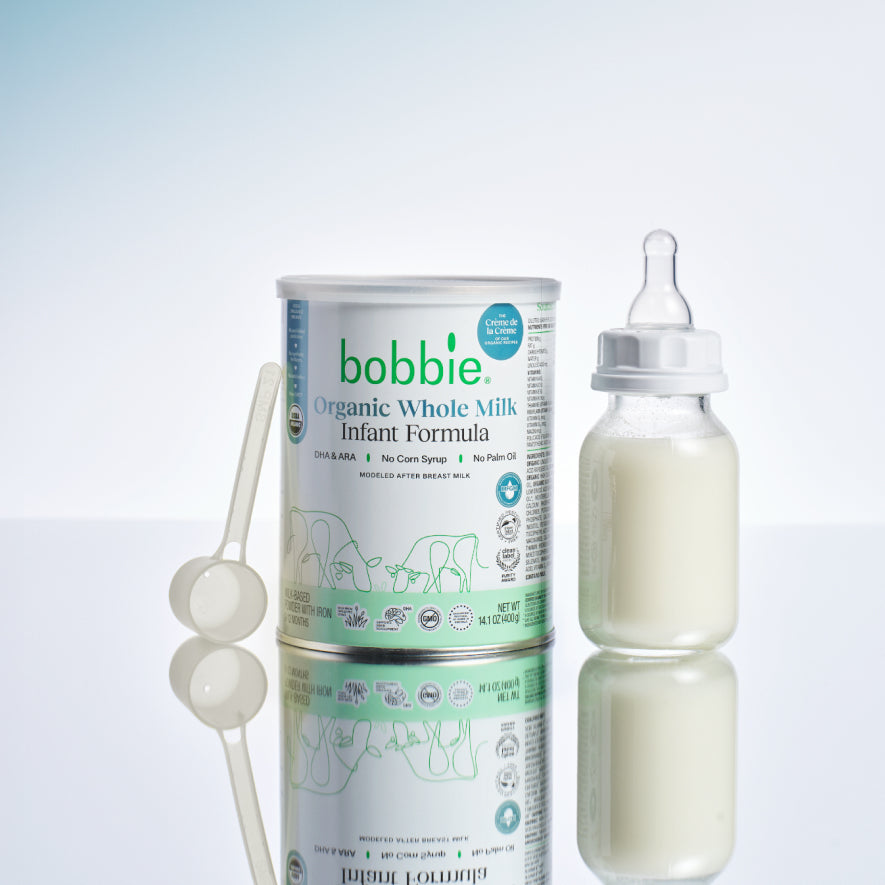
Shop Organic Whole Milk Infant Formula

Formulas That May Taste More Similar to Breast Milk — and Why
Some baby formulas go above and beyond to replicate the natural sweetness and smoothness of human milk.
Key Ingredients That Can Influence Taste
The taste of infant formula depends on its ingredients and how closely it resembles breast milk. Here are the key components that most affect flavor:
-
Lactose: Naturally sweet, same primary carbohydrate found in mothers’ milk
-
No corn syrup solids: Helps avoid bitterness and high sweetness level
-
DHA from marine sources: Slight marine taste possible, but essential for brain development
-
No palm oil or soy: May lead to easier digestion
-
Milk fat with naturally-occurring milk fat globule membrane (MFGM): Naturally found in breastmilk, may improve creaminess
Top-Tasting Formulas Parents Recommend
Choosing a formula that tastes good can make feeding time easier for both baby and parents. Here are some of the best baby formula options that many parents say their babies love the taste of:
Bobbie Organic Whole Milk
Bobbie Organic Whole Milk Infant Formula uses organic whole milk sourced from grass-fed cows, which may be easier to digest and has a naturally creamy texture. Without palm oil or soy, it offers a mild taste and supports healthy digestion.
Bobbie Organic Original
Made with organic lactose as the primary carbohydrate, Bobbie Organic Original Infant Formula avoids corn syrup solids, resulting in a naturally sweet and mild flavor that many babies accept easily. It’s also free from artificial additives, making it a clean and simple choice.
Kabrita Goat Milk
A European formula that uses goat’s milk instead of cow’s milk, giving it a rich taste that’s easy to digest. Kabrital does not use conventional palm oil or corn syrup solids, appealing to parents looking for a more natural and wholesome option with A2 goat milk proteins.
Bubs Goat
Made from goat milk, this formula has a slightly sweet taste and can be o easier on sensitive tummies. Goat milk’s unique protein structure may make it gentler for some babies to digest compared to cow’s milk-based formulas.
Pepticate
A hypoallergenic formula designed for babies with protein allergies or intolerances. Pepticate contains extensively broken-down whey protein and features lactose as part of the carb blend, making it more palatable than many other hypoallergenic formulas without sacrificing gentle digestion.


Your go-to resource for all things new baby.
Sign up to get the scoop on feeding, sleep, poop, and so much more.
By singing up for email, you are to receive marketing emails from Bobbie and can manage your email preferences or unsubscribe at anytime
Ways to Improve The Taste of Formula
If your formula journey is off to a rocky start, don’t stress — some babies just need a little time (and a few clever tricks) to warm up to the bottle. Good news: There are safe, gentle ways to help ease the switch.
Start With What’s Inside
Before you reach for the bottle warmer, take a peek at the ingredient list. Formulas that include some of the same features of breast milk may taste better to babies — they are better matched to what your baby may be used to. Here’s what to look for:
-
100% lactose as the carbohydrate (as lactose is the primary carb source breast milk!)
-
A 60:40 whey-to-casein protein ratio, which mirrors what’s found in mature breast milk and makes for easier digestion
-
Naturally-occurring milk fat, not exclusively added vegetable oils
-
Lower iron levels (around 1.0–1.3 mg per 100 kcal), which lends a more neutral taste while still supporting healthy development
These factors don’t just support your baby’s growth — they can also help with bottle acceptance.
Warm It Up (Like Mom Does)
Breast milk is warm straight from the source, so it’s no surprise that some babies give the cold bottle the cold shoulder. Warming formula to body temperature (around 98.6°F or 37°C) can make a big difference in taste and acceptance. Here's why:
-
It mirrors breast milk temperature: Babies love that cozy, just-right warmth
-
It tones down strong flavors: A gentle warm-up can soften metallic or fishy notes from nutrients like iron and DHA
-
It helps with bottle acceptance: Many babies are more willing to latch when the temp feels familiar
How to Warm Formula Safely
If you're using powdered formula and want to sterilize it properly, here’s the go-to method:
-
Bring water to a rolling boil for 1 full minute
-
Take it off the heat and let it cool for 5 minutes
-
Mix in the formula powder
-
Within 30 minutes of mixing, serve or refrigerate
This method keeps things safe for young babies (especially those under 8 weeks, premature or with compromised immune systems) while protecting the formula’s nutrients. Easy, safe and baby-approved!
Important: Always prepare powdered formula according to package instructions and follow formula bottle safety rules for storage.
Improve Water Quality
What’s in your water can change how formula milk tastes — even if it’s safe to drink! Ensure your tap water is safe to drink before using it to prepare formula. Your local health department can help with that.
-
Naturally-occurring minerals or additives like fluoride may affect the taste of your tap water.
-
Use filtered or bottled water (but not mineral or spring water).
-
Store water in a sealed container at room temperature for easy prep.
Combine With Breast Milk at First
Mixing expressed breast milk with prepared formula can be a game-changer if your baby is struggling with the new taste.
Try offering a bottle with:
-
75% human milk
-
25% prepared formula
Gradually shift the ratio over 1–2 weeks to help your baby adjust both taste-wise and digestion-wise.
Ask About Safe Flavor Enhancers
Some pediatricians suggest a drop of alcohol-free vanilla extract (for babies 6 months and older) to gently sweeten the flavor. Avoid adding sweeteners, juice or anything not doctor-approved. Sometimes, adjusting the bottle type, nipple shape or flow rate helps too.
Why Choose Bobbie Organic?
Bobbie Organic formulas are crafted to be gentle, clean-tasting and high in quality — made with organic lactose, no corn syrup,palm oil or synthetic additives. While they may cost a bit more than mainstream options, many parents find the difference in taste and ingredient purity well worth the investment for their baby’s health and comfort. Learn more about why parents are choosing Bobbie here.
FAQs
How Can I Introduce Formula to a Breastfed Baby Without Rejection?
Try offering formula when your baby is calm and slightly hungry. Use a slow-flow nipple, warm the bottle to body temperature and consider combining prepared formula with a small amount of breast milk with formula to ease the transition.
Which Ingredients in Formula Are Modeled After Breast Milk?
Lactose as the carbohydrate, whole milk fat that contains MFGM, DHA from marine sources and avoiding corn syrup solids or palm oil may make formula taste and feel more like breast milk.
What If My Baby Refuses Every Formula I Try?
If your baby consistently rejects formula or shows signs of discomfort, try different types like goat milk-based or hypoallergenic formulas. If issues persist, consult your pediatrician for guidance.
When Should I Consult a Pediatrician About Taste or Digestive Concerns?
If your baby experiences ongoing fussiness, vomiting, diarrhea, rash or poor weight gain related to feeding or refuses multiple formulas, it’s important to seek medical advice right away.
Final Thoughts — Helping Your Baby Feel at Home With Formula
Let’s be honest: taste isn’t everything, but it’s a big deal when your baby is used to mother’s milk. Fortunately, with thoughtful ingredients, warm feeding tips and the right formula, most babies transition beautifully.
Bobbie’s line of organic formulas — including Bobbie Organic Original, Bobbie Organic Whole Milk and Bobbie Organic Gentle® — are designed with taste, quality and easy digestion in mind. That means fewer struggles at feeding time and more confidence for you.
Want a formula that’s closer to breast milk in taste and quality? Shop Bobbie to make feeding easier, smoother and more comforting for your baby.
The content on this site is for informational purposes only and not intended to be a substitute for professional medical advice, diagnosis or treatment. Discuss any health or feeding concerns with your infant’s pediatrician. Never disregard professional medical advice or delay it based on the content on this page.


